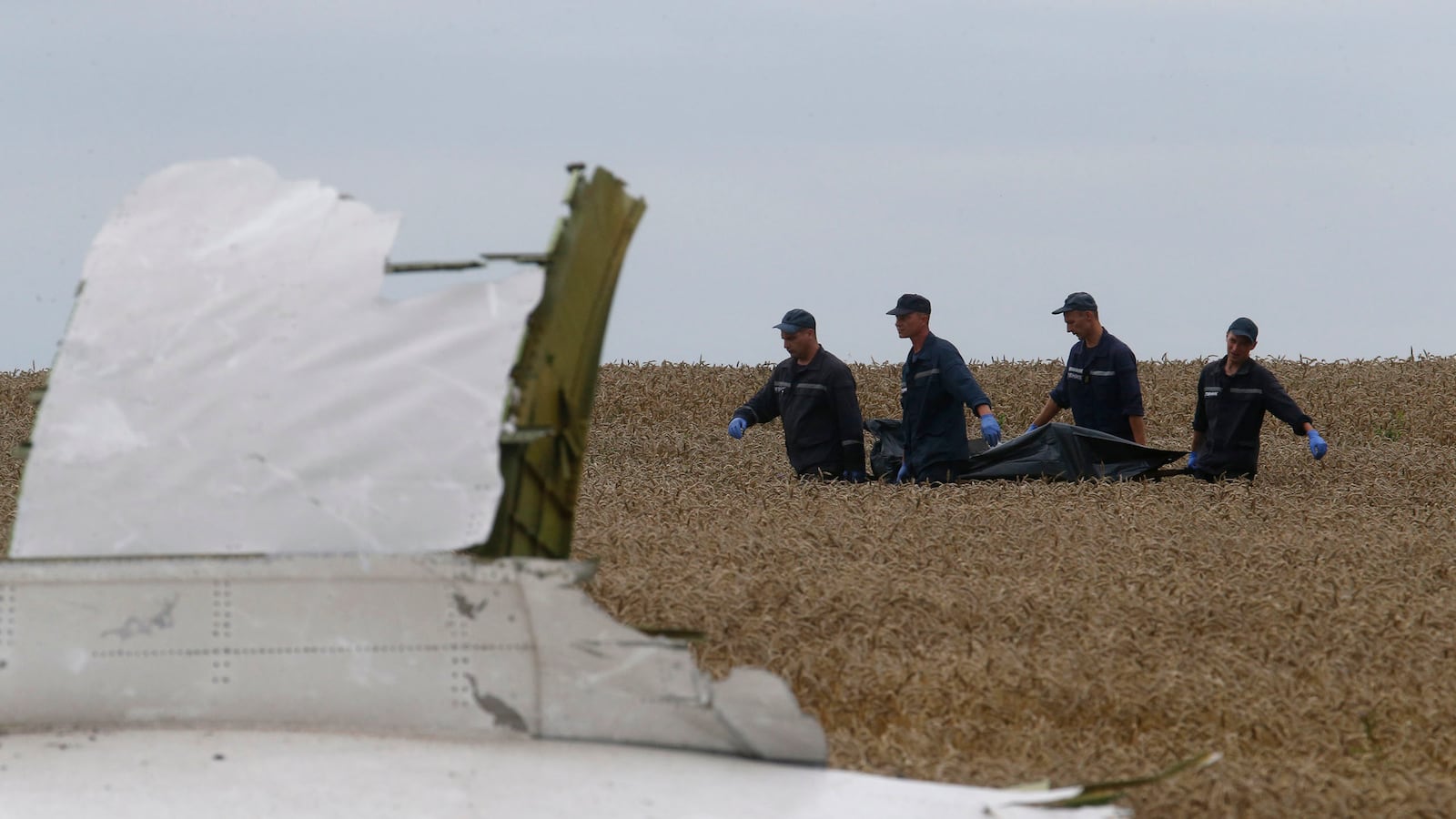The downing of Malaysia Airlines Flight 17 by what was probably a Russian-made Buk surface-to-air missile battery is a nightmare scenario for airlines, governments and travelers. Many might worry that terrorist groups such as the Islamic State in Iraq and al-Sham (ISIS) might be able to perform “copycat” attacks.
Thankfully, that possibility is remote.
ISIS, which has overrun large swaths of Syria and Iraq and which now calls itself the Islamic State, would first have to capture a surface-to-air missile (SAM) battery and then find trained crews to operate those weapons.
“In the event that a group like ISIS captures a high-altitude SAM unit, there is one important question: Do they have the acquiescence and/or support of some or all of the missile battery crew?” asked Steve Zaloga, an expert on missiles with the Virginia-based Teal Group. “If they have a significant number of trained crewmen in the missile unit who either volunteer to serve or who can be coerced to serve, they may be able to operate it.”
However, the situation in Iraq and Syria is quite different from Ukraine, where both the missiles and crews are readily available. Zaloga said there were military units already equipped with the Buk missile system that brought down the Malaysian-operated airliner operating in eastern Ukraine. Because Ukraine used to be part of the Soviet Union and its army still uses Russian weapon systems, there would be no shortage of men who knew how to operate the Buk.
Thus, it would have been relatively easy for pro-Russian separatists to find trained crews to operate any captured (or Russian-provided) weaponry. Indeed, the separatists boasted at the end of June of capturing a Buk system when they overran a Ukrainian base.
The Buk is not a small weapon. It’s a vehicle-mounted system with 18-foot-long missiles. Much of the fear involving surface-to-air missile attacks on commercial airlines involves the smaller, and less capable man-portable, air defense systems (MANPADS) like the American Stinger, which was used to good effect against Soviet helicopters in Afghanistan in the 1980s. The Russians version is called the Strela, and the Russians have sold them to practically everyone.
But not so the Buk. While the Russians delivered eight systems to the Syrian government from 2010-2013, according to the Stockholm International Peace Research Institute, there have been no reports of ISIS capturing any from Syrian forces, mainly because they’re not deployed in vulnerable forward positions. (ISIS has no air force.)
But what about Iraq? Could ISIS get hold of systems in their march on Baghdad? Again, unlikely. While the former Soviet Union was an enthusiastic seller of weapons, older systems aren’t as capable as the Buk.
“I am not sure what is still functional in Iraq from the Saddam days when there were high-altitude systems,” Zaloga said.
Michael Pietrucha, a former U.S. Air Force F-4G and F-15E electronic warfare officer and air defense expert, said that it was very unlikely a group like ISIS could pull off an attack like the one in Ukraine.
“The systems they might be able to capture are older, in worse condition and less capable,” he said.
Iraq may still have the older SA-6 Gainful, a predecessor of the Buk, but while it has the ability to attack an airliner, the older missile system is much more difficult to use.
“The SA-6 requires multiple vehicles to make it work, which highlights the big limitation,” Pietrucha said.
Down the road, if ISIS continues its march, there might be a concern. Iraq is scheduled to receive American-made Hawk missiles and Russian-made Pantsir S1s air defense systems, said one Air Force official. But it is unclear if those weapons have been delivered yet.
If those weapons are already in country, ISIS could, conceivably, capture one. But the Hawk system, the official noted, is much more difficult to operate than the Russian Buk system. “I think it cannot be ruled out, but still unlikely,” the official said. Chalk one up for American technological complexity.
The real fear in places like Iraq, Syria and Libya, but which isn’t new, is the number of shoulder-launched missiles. The Air Force official noted that Iraq has many Stinger missiles, either shoulder-launched or from a Hummer called the AN/TWQ-1 Avenger. There are also a host of Russian-made systems that are widely available. Terrorist groups could certainly use those weapons in an attempt to shoot down an airliner.
This is a takeoff and landing problem, however. Shoulder-launched weapons are generally limited to attacking targets below 18,000 feet—well below the typical 30,000+ foot cruising altitude of an airliner.
Airlines have been talking for years about installing counter-measures against MANPADS attacks, but only Israeli carrier El Al has done so. (And, obviously, there aren’t a lot of Israeli jets flying to Damascus or Baghdad.) Instead, airports have taken to aggressively protecting their perimeters, forcing any would-be attackers out of range of departing or approaching jets.
"It doesn’t change our existing concerns over MANPADS,” Pietrucha said. “Anyone flying over a war zone has to be concerned about MANPADS, but that does not mean you have go into a raging panic.”





